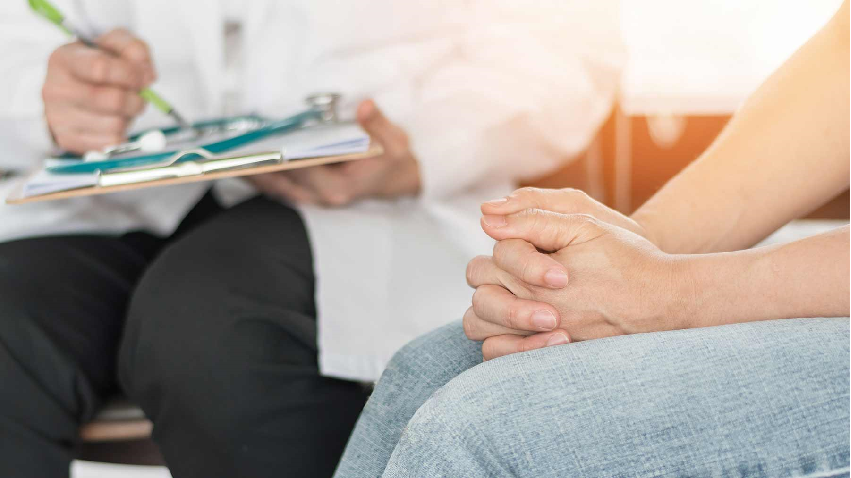
17 Nov What do I need to know about STDs?
STDs are spread through sexual contacts – such as oral, anal, and vaginal sex. STDs are common and usually have no symptoms. In this article, you will know about STDs as well as, there are ways to prevent and treat STDs.
Should I Worry About Stds?

Surely you have already heard of sexually transmitted infections such as gonorrhea, chlamydia, herpes, HIV, and others. STDs are quite common – many people will get one at some point in their lives. Young people between the ages of 15 and 24 are more likely to contract an STD than any other age group. Some of the most common STDs (such as gonorrhea and chlamydia) can be cured with antibiotics, and are not dangerous if treated right away. But others can cause serious health problems, especially without treatment.
Although STDs are common, sometimes people feel embarrassed or embarrassed when they get infected. But STDs are like any infection that passes from one person to another – it’s just that here the route of infection is through sex.
Having an STD does not mean you are “dirty” or a bad person. You are just one of the millions of people who have been infected. As with other infections, there are antibiotics to keep you healthy if you do get an STD. There are also ways to protect yourself from STDs.
How To Prevent Stds?
The only 100% guaranteed way to avoid an STD is to avoid all kinds of sexual contact, whether vaginal, anal, or oral sex and skin-to-skin genital contact with another person. No sex = no STDs. But if you do have sex, practicing safe sex reduces the chances of contagion.
Safe sex means using condoms, female condoms, or mouth dams. These barriers stop fluids and some of the skin-to-skin rubbings that STDs transmit. You can use condoms for vaginal sex, anal sex, or oral sex on a penis. You can use female condoms for vaginal sex and anal sex. And you can use mouth dams for oral sex on the vulva or anus. Read more about using condoms and mouth dams.
Two of the best ways to prevent STDs are to not have sex and to use condoms when you have them. There are also other steps you can follow:
- Get tested for STDs. If you have an infection, you can treat yourself to stay healthy and avoid spreading the STD to other people.
- Talk to your partner. Good communication, especially when it comes to safer sex, can help build trust and bring you closer as a couple.
- Choose less risky activities. There are other ways to be sexual and stay safe. Some of the things you can do without the risk of STD infection are masturbation, dry rubbing (rubbing your genitals against each other, with your clothes on), talking sexy, and cuddling.
How Are Stds Spread?
STDs are usually spread by having unprotected vaginal, anal, or oral sex (for example, without using a condom ). But it is not always so simple. There are many STDs and they are spread in different ways.
Some infections are spread via bodily fluids such as semen, vaginal fluids, and blood. Others get it when the skin of the mouth or genitals rubs against the skin of another person.
Bottom line: Any type of sexual contact that involves bodily fluids or touching of genitals puts you at risk for an STD. That’s why it’s critical to use condoms or other barriers (such as mouth dams )—they help block the skin and fluids that spread STDs.
Vaginal sex (penis-in-vagina) and anal sex (penis-in-anus) carry special risks if you don’t use a condom —using one are much safer. Oral sex (mouth to vulva, penis, or anus) can also spread certain STDs (such as herpes or HPV ). Using condoms or dams for oral sex can protect you and your partner.
How Do I Know If Someone Has An STD?
The ONLY way to know for sure if you or someone else has an STD is to get tested for STDs. STDs usually show no symptoms. So just looking at someone’s penis or vagina can’t tell you if they have an STD or not. People with an STD look and feel completely normal – but they can still infect others.
Sometimes STDs cause problems and you can notice them. Get tested for STDs if you have any of these symptoms on or near your genitals :
- pain
- swelling
- Rare bumps, rashes, or sores
- Itching and/or burning sensation
- Pain or burning when urinating
- An unusual discharge from the penis
- Vaginal discharge with a different odor, color, or texture than usual
- Bleeding from your genitals (that is not your period)
These symptoms do not always indicate that you have an STD. Other health problems can cause similar symptoms. For example, a burning sensation when urinating can be a urinary infection. A different discharge than usual may be a vaginal infection. The only way to know for sure what’s wrong with you is to see your doctor or a Planned Parenthood health center.
You may like to read The mental health of infants and toddlers



Sorry, the comment form is closed at this time.